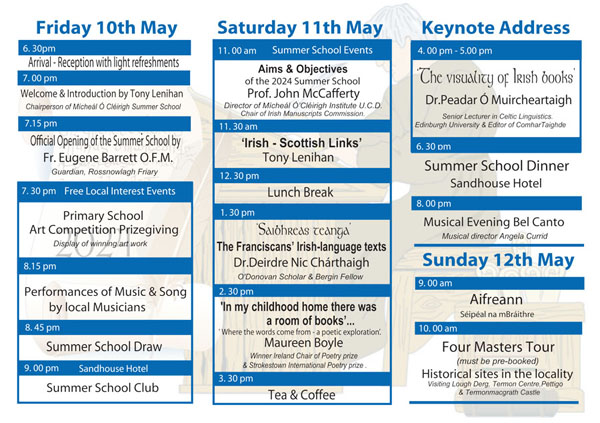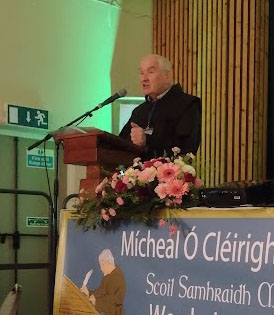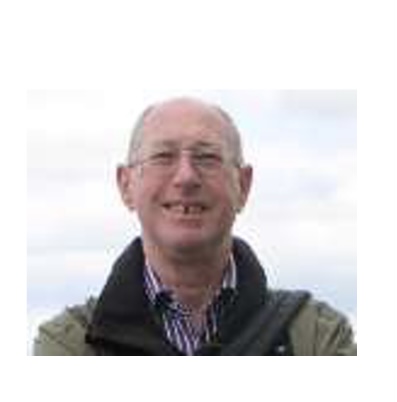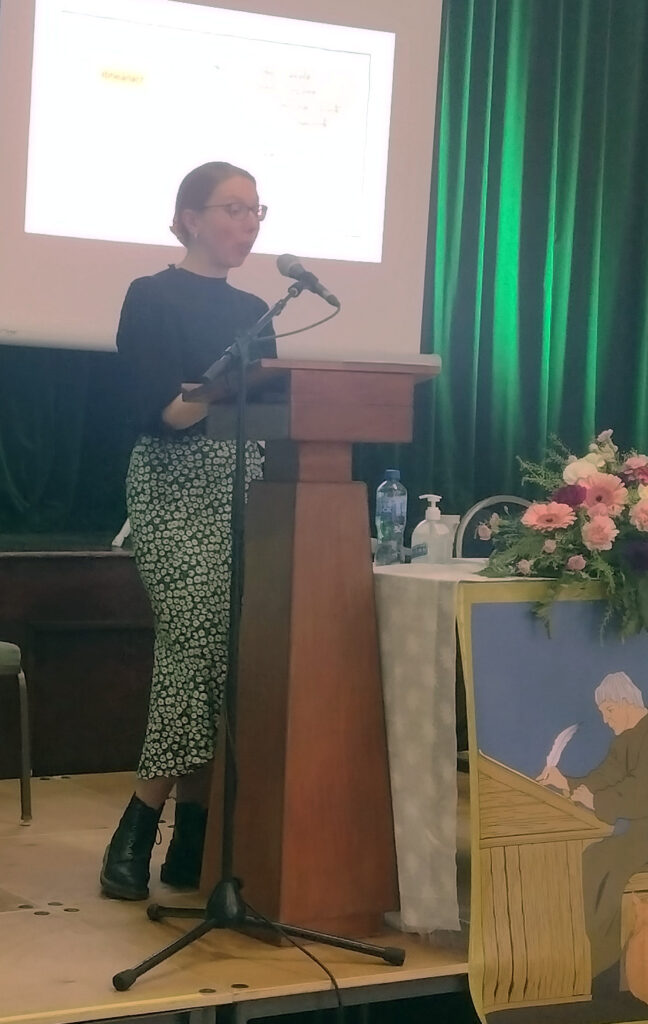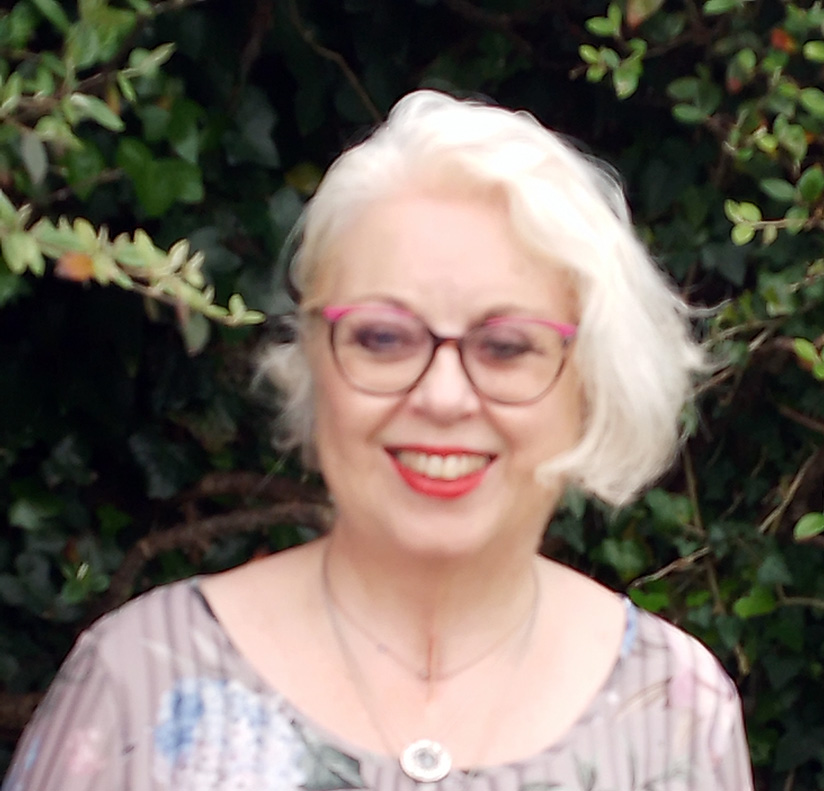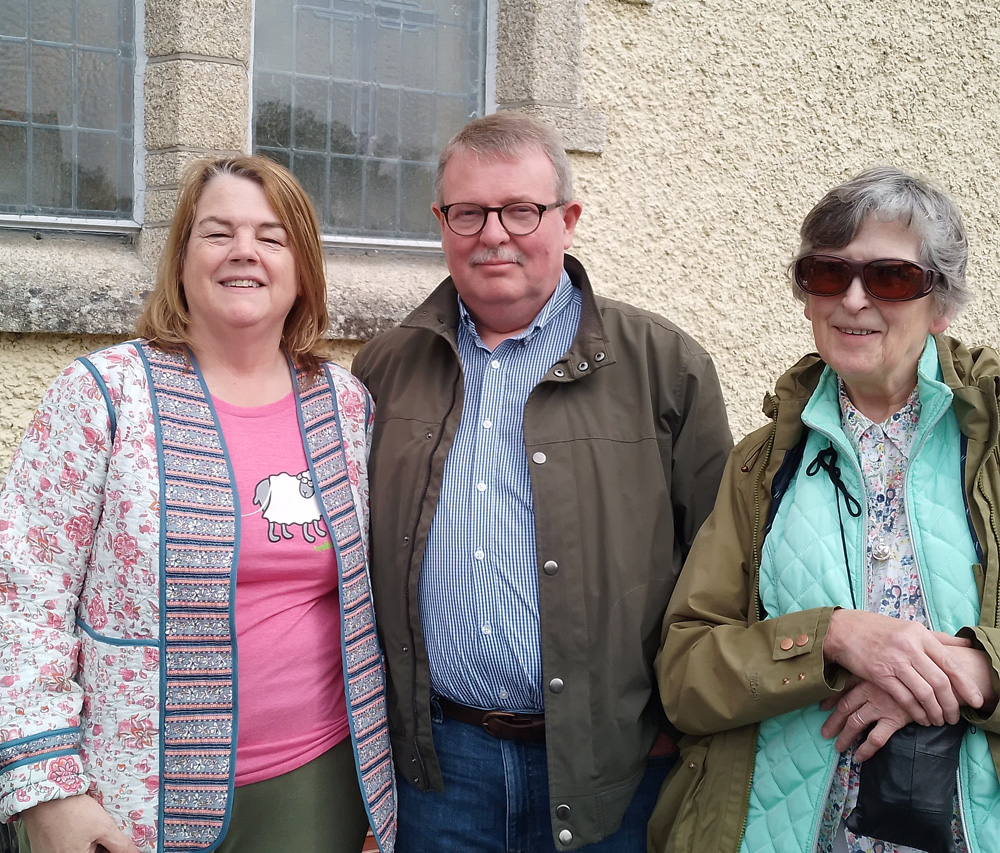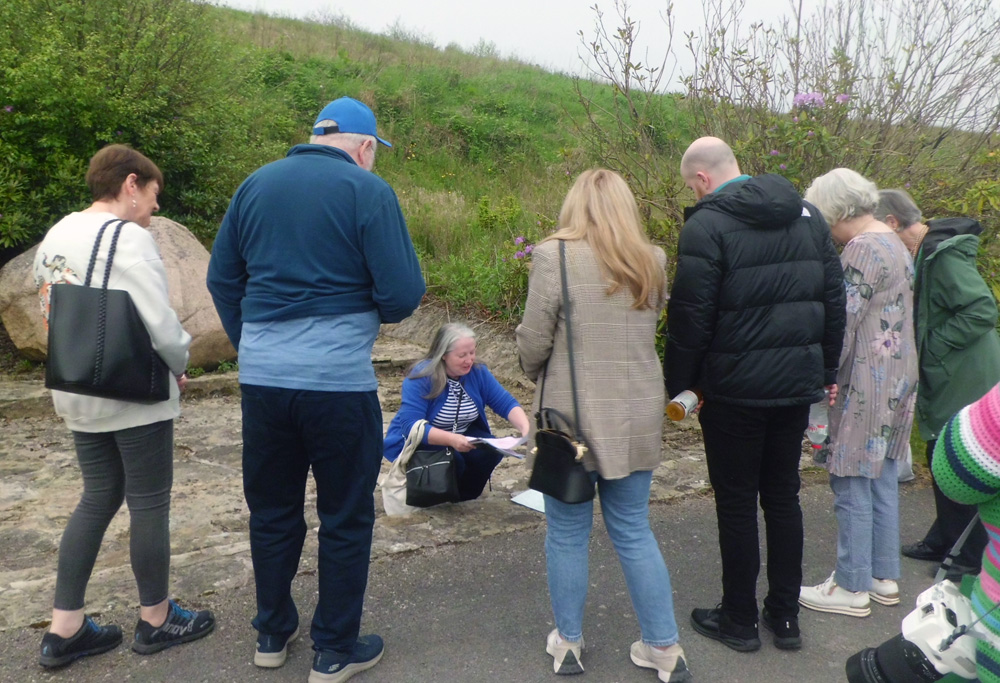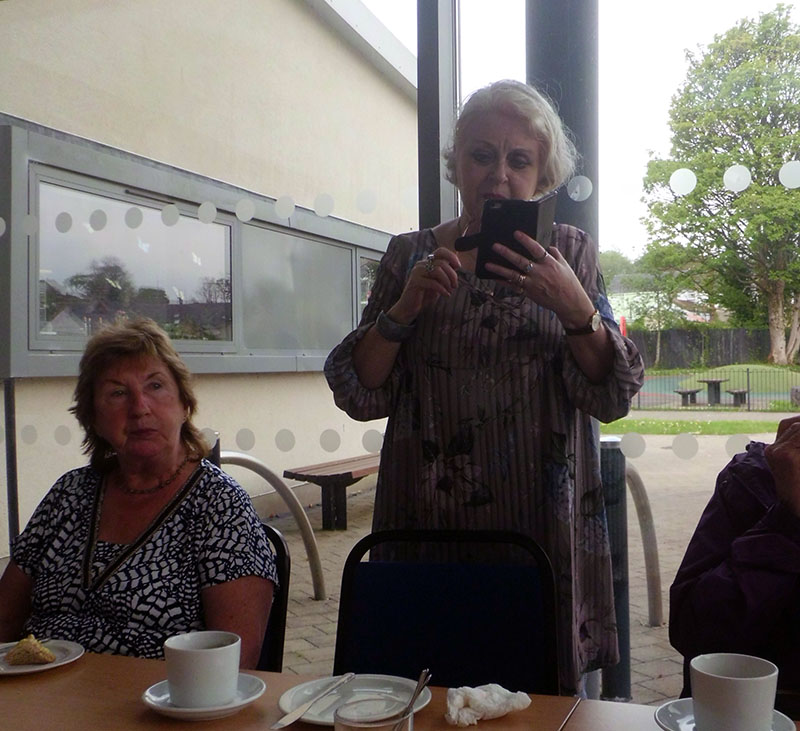
2024 Summer School
The 2024 Mícheál Ó Cléirigh Summer School was held over the weekend of Friday 10th to Sunday 12th May. The theme of the weekend was ‘Words, Language and Lore/ Focail, Teanga agus Seanchas’ and it examined how words and language collided in Mícheál Ó Cléirigh’s Ireland. We also celebrated our tenth Summer School and had a very interesting, exciting and informative weekend.
These are the current sponsors of the Mícheál Ó Cléirigh Summer School

See our weekend programme below.
Friday
Musical introduction by the senior members of the Phil Rooney Comhaltas Ceoltoiri Eireann in Ballyshannon.
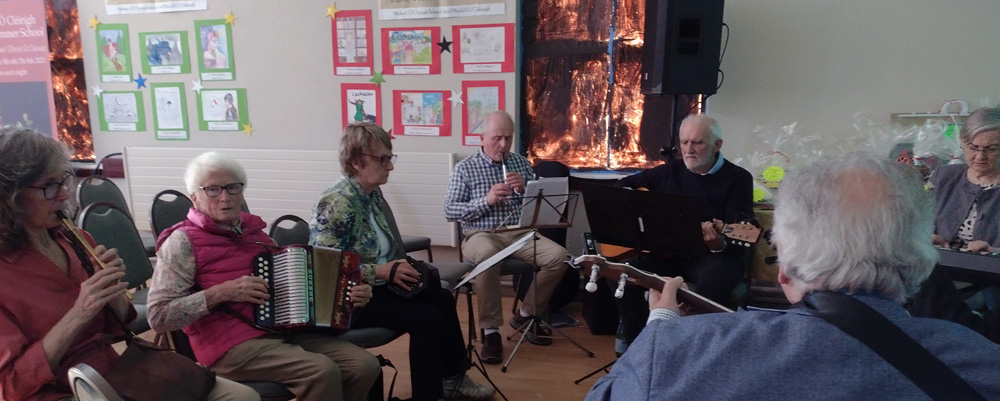
Welcome to the Summer School
Tony Lenihan- Chairperson
Tony Lenihan, Organising Committee Chair, welcoming the assembled guests said “we are delighted to bring you a programme that both commemorates the legacy of Br.Mícheál Ó Cléirigh and includes social and cultural activities that will interest and engage all ages”.
The Summer School was formally opened by Fr Eugene Barrett O.F.M Guardian of the Rossnowlagh Franciscan Community. He spoke of .the importance of such events that remind us of the work of the annalists and the role played by the Franciscan Convent of St Anthony in Louvain(Leuven) who were inspired to conceive of the idea to assemble the Lives of the Saints which in turn meant that to give it context that a further work was needed and this was the secular history of Ireland which led to the compilation of the Annals of the Four Masters. To especially remember those who toiled on such works in such difficult circumstances in the early 17th Century
Primary Schools’ Art Awards
The primary Schools’ art awards were in four categories and shown here are the winners in each category.
Junior Senior Infants

First & Second Class

Third & Fourth Class

Fifth & Sixth Class

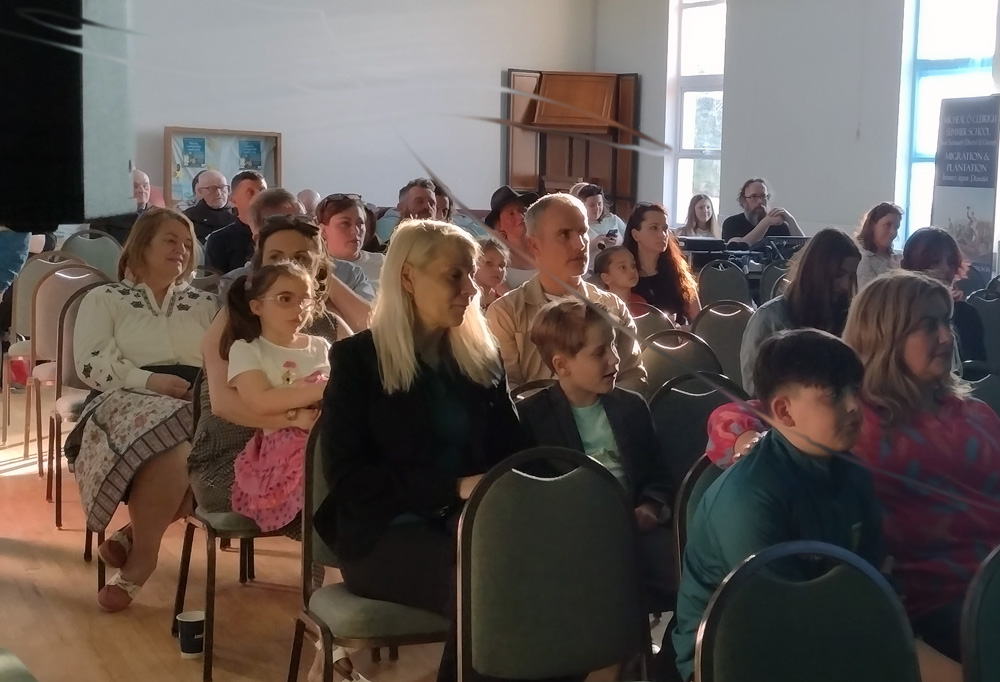

Comhrá Cáinte Sandhouse Hotel
Bhí ciorcal comhrá Gaeilge ar siúl in Óstán an Sandhouse ar an Aoine 9ú Bealtaine ag a naoi a chlog. Phléamar príomhthéama Scoil Samhraidh Mhichíl Uí Chléirigh, Focail, Teanga agus Béaloideas. Bhí cuid d’aoichainteoirí na Scoile Samhraidh i láthair ag seisiún an-bhríomhar de chomhrá ceoil agus amhránaíochta. Gné nua den Scoil Samhraidh a bhí anseo ina raibh cruinniú neamhfhoirmiúil Gaeilgeoirí ann in éineacht le foghlaimeoirí a raibh oíche chomhrá agus amhránaíochta acu faoi stiúir Caitlín Mhic Amhlaigh.

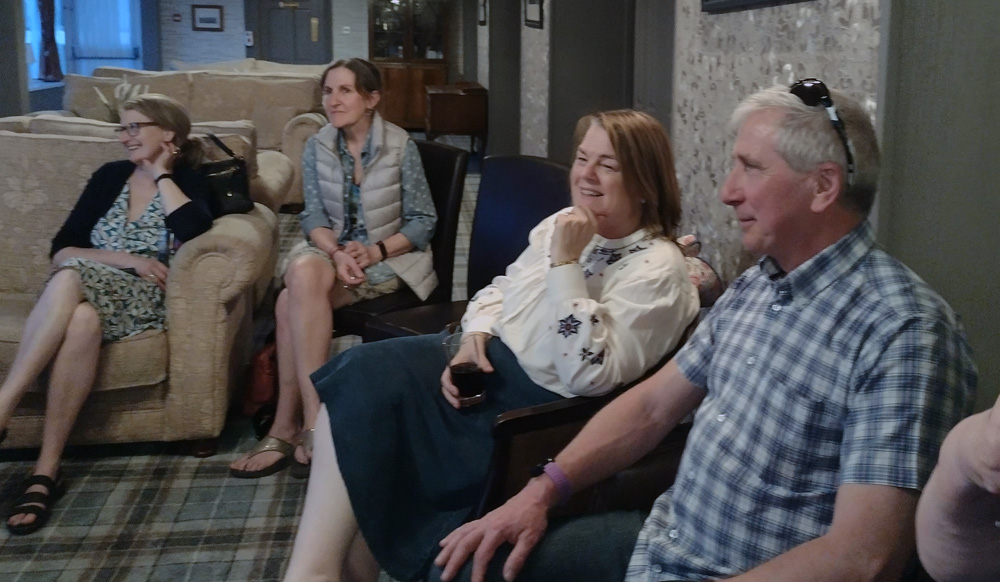
This was a new feature of the Summer School where there was an informal gathering of Irish speakers along with learners who had a night of conversation and song led by Caitlín Mhic Amhlaigh.
Saturday 11th May

Aims & Objectives of the 2024 Summer School
Professor John McCafferty
Professor John McCafferty gave a short introduction to the 2024 Summer School where he explained that the early 17th Century saw the focus of the learned class in Ireland having to leave and re-position themselves on the Continent. This movement due to the oppression of the increasing Penal laws which reached their zenith in the early 1700s meant that books and texts had to be printed on the Continent and smuggled into Ireland.
Professor John McCafferty is the Director of the Mícheál Ó Cléirigh History Department, University College Dublin. In addition he is chair of the Irish Manuscripts Commission, and an Honorary Professor of the History of Catholicism in the Department of Theology and Religion at Durham University.
Educated in University College Dublin and at the University of Cambridge, McCafferty is an historian of both Catholicism and Protestantism in early modern Ireland and Britain. John McCafferty has made a significant contribution to historical records including editing The
Act Book of the Diocese of Armagh, 1518-1522 (2020). The donation of manuscripts and rare books by the Franciscan to UCD has underpinned much of this work. With Dr. John Kelly, he edited the recently released first volume of The Oxford History of British & Irish Catholicism covering the period 1530-1640, from Henry VIII’s break with Rome to the outbreak of the civil wars in Britain and Ireland. As Director of the Mícheál Ó Cléirigh Institute, he has been involved with the Summer School since the beginning.

Irish- Scottish Links
Mr Tony Lenihan
This talk explored the origins of many place names in Scotland and Ireland which not only had their origins in the Pictish and Gaelic languages but also Saxon, Viking and Norman language influences. This also applied to Ireland but in general the Gaelic place-names predominate.
Tony Lenihan is the current chairperson of the Mícheál Ó Cléirigh Summer School Committee and editor of the Summer School yearbook. He has an M.Litt. Nua-Ghaeilge ar Ollscoil na hÉireann Mhá Nuad (2016), a B.A. in Mathematical Science, and a Diploma Computer Science from University College Cork. A former Information Technology consultant and lecturer in Galway Regional Technical College (now part of Atlantic Technical University), he is a proud Corkman who has lived in Germany and Watford as well as Connacht, Leinster and Ulster. Experiencing a range of places has led to an interest in culture and in investigating the origins of place names, language, and identity.

Afternoon talks
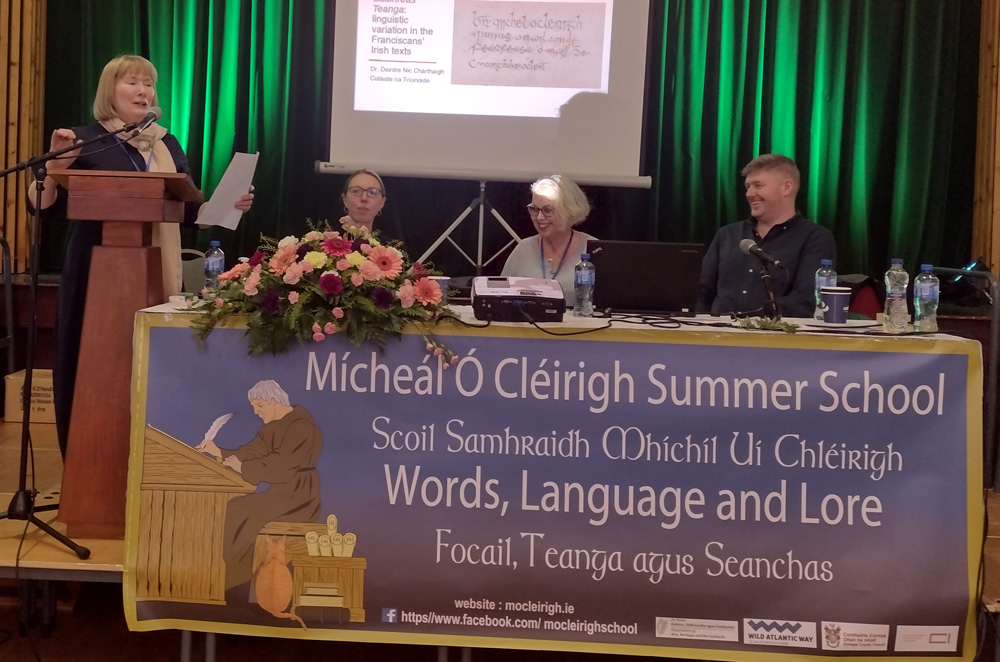
Saibhreas Teanga- The Franciscans Irish Language texts
Dr Deidre Nic Chárthaigh
This talk explored the way that written Irish in the 17th Century had to change from its earlier embellished and archaic style written and employed by the chroniclers to one that would be more readily understood by the ordinary people. Deidre traced how the Franciscans in Louvain led this transformation by writing simpler and more easily understood catechisms and religious tracts, printed there and smuggled back to Ireland.
Dr Deidre Nic Chárthaigh is Assistant Professor at the Department of Irish and Celtic Studies in Trinity College Dublin, and is currently editing a series of classical poems on the harp and on harpers. She achieved her BA in Modern Irish and History from TCD (2014) and her PhD from the same institution (2019). Nic Chárthaigh, an O’Donovan Scholar (2021-22) and Bergin Fellow (2022) in the School of Celtic Studies at the Dublin Institute for Advanced Studies, is a member of project Léamh. Her research focuses on Early Modern Irish prose, bardic poetry, and the Irish manuscript tradition in the post- classical period with a particular interest in the literature of sixteenth and seventeenth-century Ireland. She has edited a number of poems from that period in peer-reviewed journals such as Ériu and Celtica, and is currently working on a project entitled Rómánsaíocht Revisited, which aims to make the corpus of Early Modern Irish prose texts more widely available and accessible.
“In my childhood home there was a room of books”
‘Where the words come from -a poetic expression’
Maureen Boyle
Maureen Boyle took us on a journey from her own childhood influences which resonated with many members of the audience who appreciated her poetry readings.
Ms Maureen Boyle is an educator and author. Her most recent book of poetry, ‘The Last Spring of the World’ was published in June 2022 by Arlen House, Dublin. Educated at Trinity College Dublin, she is the recipient of numerous awards for her poetry including: the Ireland Chair of Poetry Prize; the Strokestown International Poetry Prize; the inaugural Ireland Chair of Poetry Travel Bursary and the Fish Short Memoir Prize. Her most recent award is from the Arts Council of Northern Ireland to research the history of botanical embroidery for an ecological project in poetry. She is a poetry and memoir mentor with the Irish Writers’ Centre, Dublin. (108)
The Visuality of Irish Books
Dr Peadar Ó Muircheartaigh
Dr Peadar Ó Muircheartaigh is Senior Lecturer in Celtic Linguistics at the University of Edinburgh and a member of the team of scholars for the peer-reviewed journal, Comhar Taighde. Before taking up the post in Edinburgh, he was Senior Lecturer at the Department of Welsh and Celtic Studies, Aberystwyth University in Wales. Originally from Mayo, he was educated at NUI Galway, the University of Notre Dame and the University of Edinburgh where he completed his PhD. His research interests include the literature and culture of eighteenth-century Gaelic Scotland and Ireland. He held research fellowships in the School of Celtic Studies at the Dublin Institute for Advanced Studies (2017-18) and in the Arnamagnæan Institute at the University of Copenhagen (2020-22). With a special interest in the relationship between manuscript and print in the Gaelic world, he has published widely on Irish language and literature.

Dinner Sandhouse Hotel
At 6.30pm,the attendees and others reconvened at the Sandhouse hotel to have a three course dinner. Afterwards the guests were entertained by the Bel Canto Choir led by their musical director Angela Currid.


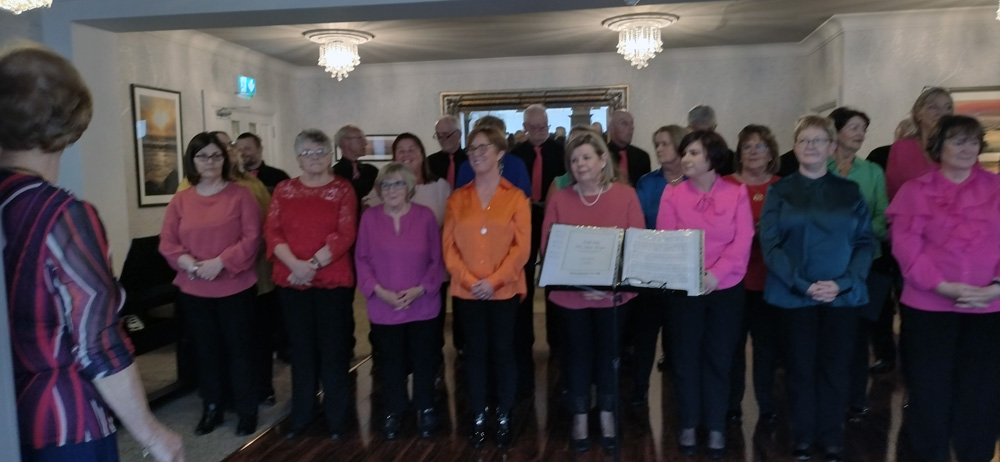
Sunday 12th May
Aifreann as Gaeilge agus Bearla sna Séipéal na Bráithre.
Four Masters Tour of Local Historic sites.
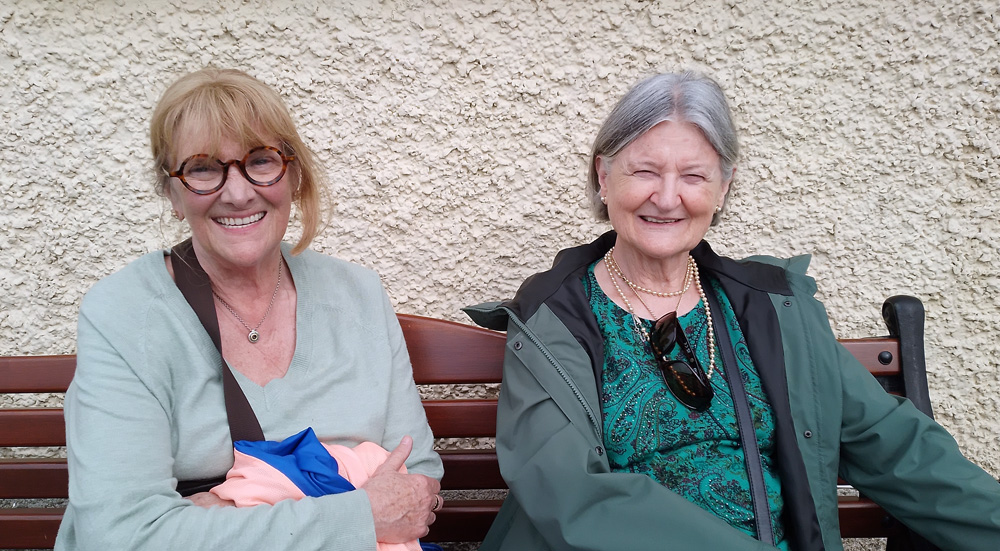
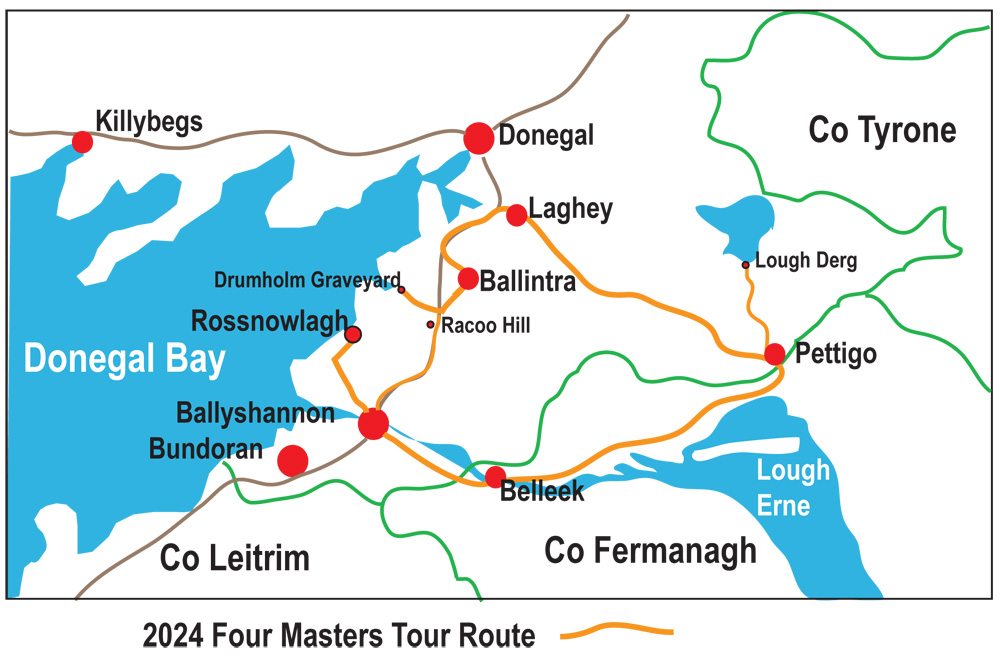
The Boundary Stone
This stone at one time marked the O’ Cléirigh clan land boundary at “Cul Remhar” or as is known today as the townland of Coolmore. The two townlands of Cul Remhar (Coolmore) and (Keran) Coolbeg were granted to Trinity College in the Plantation of Ulster.
Some 320 years after the Franciscans were expelled from their Friary in Donegal, they returned to set up the present Friary at Rossnowlagh in the townland of Coolmore.in 1950. An inscription honouring the Four Masters, with the words written by Br. Mícheál Ó Cléirigh in the Annals “Do chum glóire Dé agus onóra na hÉireann ” “For the glory of God and the honour of Ireland” was added to the stone in 1971.



St Assicus Memorial Racoo (Rathcunga)
Assicus was a friend of St. Patrick, and a skilled metal worker in brass and copper. Converted to Christianity by St Patrick he is also said to have been Patrick’s worker in iron
At Elphin , Patrick built a church, called through centuries, “Tempull Phadruig” (Patrick’s church). There he established an episcopal monastery, one of the first monasteries founded by him. He appointed Assicus as abbot-bishop, and with him left Bite, son of the brother of Assicus, and Cipia, mother of Bite.[3] Assicus was of the of Hono, a druid of wealth and influence, from whom Patrick obtained the land.[4]


Racoo Monument was built in 1957 to mark the site of the ancient church and monastic settlement called Rathcunga where St Assicus or Naomh Tassac is buried. In the Triparte of St Patrick, written by Tirecháin, who wrote this some hundred years after the death of St Patrick, it is written that:
Bishop St. Assic was Patrick’s coppersmith and made altars, tables, and square bookcases. Besides, he made our saint’s patens in honour of Bishop Patrick, and of them I have seen three square patens, that is, a paten in the Church of Patrick in Armagh, and another in the Church of Elphin, and a third in the great-church of Donough-patrick (at Carns near Tulsk in Co Roscommon). Now at sometime afterwards he was party to a lie and as penance he removed himself from the relative comfort of Elphin he made his way to west Tír Connaill to the land around Slieve League and to the island of Rathlin O’Birne remaining there for seven years. The monks of the monastery at Elphin decided to find St Assicus with the hope of persuading him to return to Elphin. When they found him on Rathlin O’Birne they had great difficulty trying to get him to give up his solitary life. Eventually he agreed to return but took ill on the journey back and was buried at the monastery of Rath Cunga. His death is believed to have happened in 490AD.
Drumhome Ancient Monastic Site
The wider area around Drumholm (Droim Thuma) Church of Ireland Graveyard and the nearby Catholic Graveyard of Mullinacross was an ancient monastic site and on the top of the hill, the burial place for Flaghertaigh Uí Maoil Doraidh King of the Cinéal Connaill and who reputedly founded the Cistercian Monastery at Assaroe near Ballyshannon in 1197.
St Adhamháin born in AD 630 may have been a native of the area but many scholars now believe that
he studied at the monastery. He later succeeded St Columchille as abbot of the monastery on Iona


Pettigo

The tour group stopped at the Termon Centre in the village of Pettigo for a light lunch. The Termon Complex is a new purpose built centre for sport & entertainment and opened May 2014. Whilst there, Maureen Boyle read one of her many poems, one to suit the occasion. Afterwards we were joined by John Cunningham who is a local historian who gave the group a short history of Pettigo and the surrounding area. Below is an extract from John Cunningham’s work on the History of Pettigo.
“The Clan Mc Grath has had a major influence on the area for a period of c300 years until the early 17th century so a major part of the book is devoted to it with an important section being the two royal pardons granted to Bishop Miler Mc McGrath’s followers by Queen Elizabeth 1. The arrival of the Ulster Plantation in the early 17th century brought an end to the old Gaelic society in the area and heralded the arrival of Scots, English and Scottish Borderers to settle in and around Pettigo. The Leslie Family who acquired control of the estate were to dominate for the next 300 years. All these too have made a lasting impact on the locality.”
French Tom Barton
One of the most successful entrepreneurs ever connected with Pettigo was Tom Barton. In 1720 he emigrated to France to take advantage of the ancient trading links between Ballyshannon and Ireland. He set up business as a wine factor and with his brother William became very wealthy. Sir James Caldwell, a neighbour from nearby Belleek, estimated their wealth in 1744 as £60,000. He stayed three months with them at that time and the extent of their business is indicated by the fact that they could give Sir James letters of credit to trading friends in Toulouse, Montpellier and Marseilles. Despite occasional rows regarding money Caldwell had borrowed from them, they remained in contact. A letter from Thomas Barton of December 1754 tells Sir James that he is sending him two bags each of oak acorns, chestnuts and walnuts on board the ‘Everina’ bound for Ballyshannon.
Ballyshannon was a notable port at the time, and there was quite a lot of trade between the west of Ireland and the west of France. Brandy, wine, and silk were imported, and wool, fish and agricultural produce were exported. There were other Irish migrants to the continent who also got involved in the liquor industry, so much so that they came to be called the “Wine Geese“
These Irish traders on the continent supplied a home market of wealthy landlords and merchants and in the case of Ballyshannon, an important military presence in the town. With an infantry barrack and a cavalry barrack, there was a large circulation of money in the locality and under the patronage of the officers, quantities of port, sherry, claret and brandy were imported. Consignments of wine from Bordeaux and elsewhere were occasionally paid for in kind by a return cargo of butter and grain.
During the turmoil of the French Revolution French Tom’s grandson Hugh, managed and maintained Daniel Guestier firm whilst he was in prison. In thanks for his loyalty Hugh was made a partner and in 1802 their partnership became official and they formed the wine firm of Barton & Guestier.
Lough Derg

St. Patrick’s Purgatory, more commonly referred to as Lough Derg because of its location in the lake of the same name in Co Donegal, is a pilgrimage site which dates back to the Fifth Century. Since then, uninterrupted for over 1500 years, it has been a place of Christian pilgrimage and prayer. The pilgrimage takes place on Station Island, and it has St. Patrick as its patron. The original monastery on Saints Island in the same lake claimed St Davog, one of Patrick’s disciples, as its founder abbot. In 1135 the Augustinian Canons were put in charge of Lough Derg. In 1497 Saint Patrick’s Purgatory was closed by order of Pope Alexander VI. Soon after in the same year he Franciscans were put in charge of the place of pilgrimage.
In 1596 the Erenach family, the Magraths held this land in trust for the Church. They secured for themselves and for their descendants in English law a personal title to what had been essentially Church property in Gaelic law. The Pilgrimage was suppressed in 1632 and all artifacts destroyed on the island. However the place remained a place of clandestine pilgrimage until the relaxation of the Penal Laws towards the end of the 18th Century
Afterwards the tour group travelled back to Rossnowlagh via Belleek and Ballyshannon..
